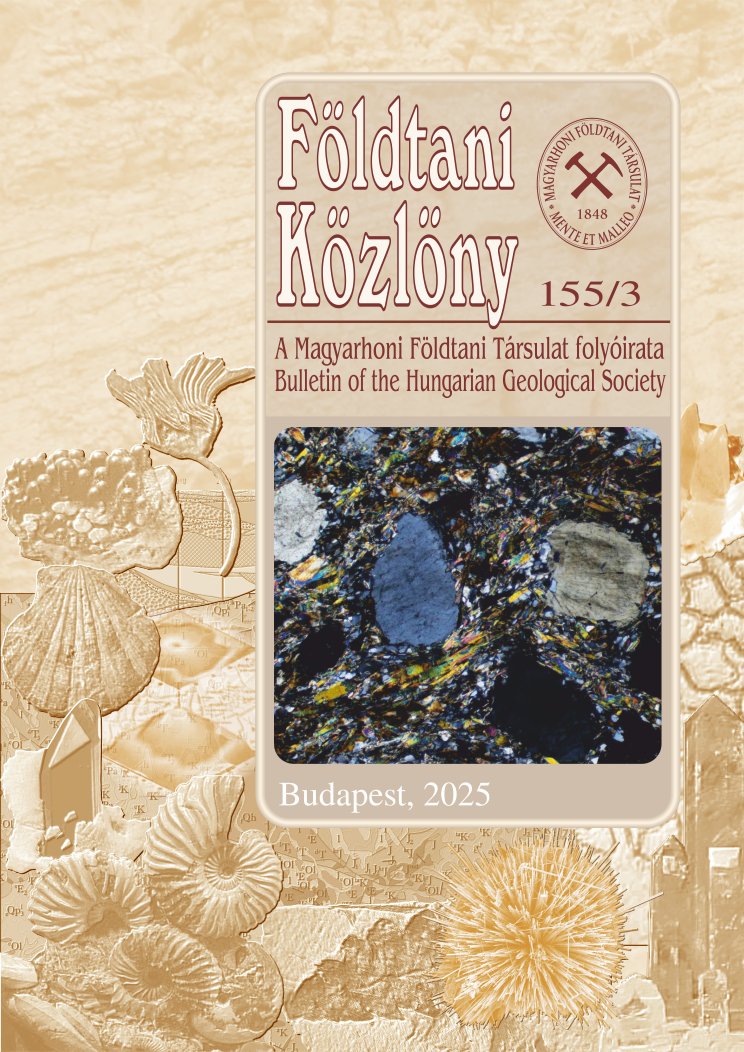Three-dimensional GPR imaging of a Gilbert-type delta: a case study from the Late Miocene Lake Pannon, Hungary
Abstract
During the early stage of its evolution Lake Pannon had been dissected by several islands and peninsulas. One of the
largest of these might have been the present Transdanubian Range rimmed by rocky coasts, sands and gravels at about 10
Ma ago (Kálla Gravel). These gravels were partly formed as wave-reworked beach deposits and as Gilbert-type deltaic
deposits.
Three depositional units were distinguished in the outcrops of the Kálla Gravel in the Tapolca Basin. The uppermost
is made up of horizontal strata of well sorted, fine sand and pebbly sand and unconformably overlies the lower ones,
which have a steep depositional dip up to 20–30°. The lower two units are mainly made up of open-fabric clast-supported
gravel and sandy gravel. The dip of beds is not constant, there are internal low angle differences and downlaps. The two
lower facies units are different only regarding their thickness and transport direction. The lowermost unit attains 20 m
thickness with southerly dip directions. The overlying unit observed and studied in details in the SE part of the largest
quarry is only 2–3 m thick and dips towards the NE. Both the large and small steep progradational surfaces were
interpreted as foresets, while horizontal surfaces as topsets of a shallow-water Gilbert-type delta.
In the largest outcrop — an active gravel pit — of the deltaic deposits ground penetrating radar (GPR) measurements
were carried out in order to reveal the architecture of the deltaic body. Data were gained from three pseudo-threedimensional grids of about 30×30 m with 2 m spacing of parallel sections. Only basic processing steps were applied:
bandpass filtering, true amplitude recovery and static correction. For comparison and control of GPR images geological
cross-sections, logs and photographs taken during the last eight years were also used.
Based on reflection terminations, amplitude and continuity variations three major units were distinguished on the
radar sections as well. The lowermost unit is characterised by strong, steep, oblique reflections, which can be seen even
at least to a depth of 12 m. 3-D mapping of these surfaces demonstrated fairly straight and uniform dip planes to the S, SE
in harmony with the dip of the lowermost large foreset unit. In the south-eastern measure grid it is cut by a high amplitude
low angle reflection, which is a downlap surface of oppositely dipping reflections up to a height of about 3 m. 3-D
mapping revealed a set of small curved surfaces extending to a few tens of metres only, indicating migration towards the
N–NE. Above both set of dipping reflections horizontal reflections are detected, corresponding to the topmost horizontal
strata of the delta.
The GPR study demonstrated that the main transport was towards the S, SE having only subtle differences in transport
direction, however, still enough to show reflection terminations between the separate lobes. The low angle erosion of the
previously deposited lobes may point to a lake-level drop of a few metres amplitude. The resulted accommodation was
filled by minor lobes quickly migrating aside (NE) by the major one. The overlying topsets indicate a continued gradual
rise of lake-level.











